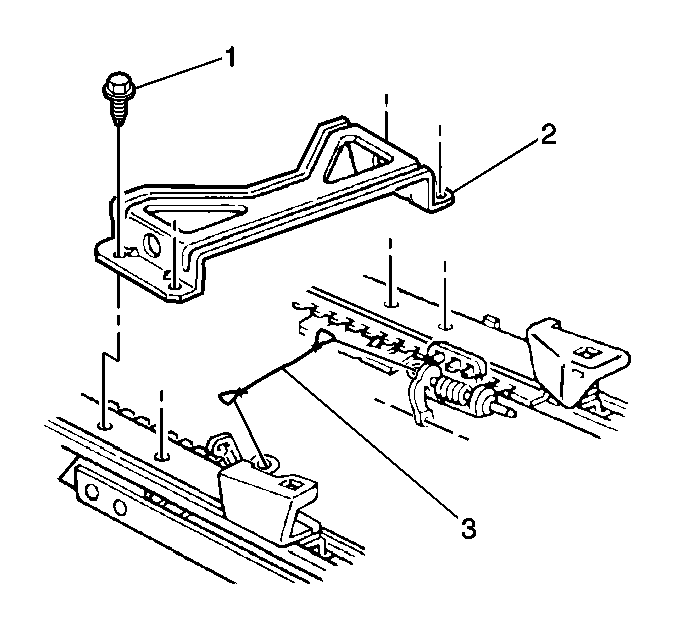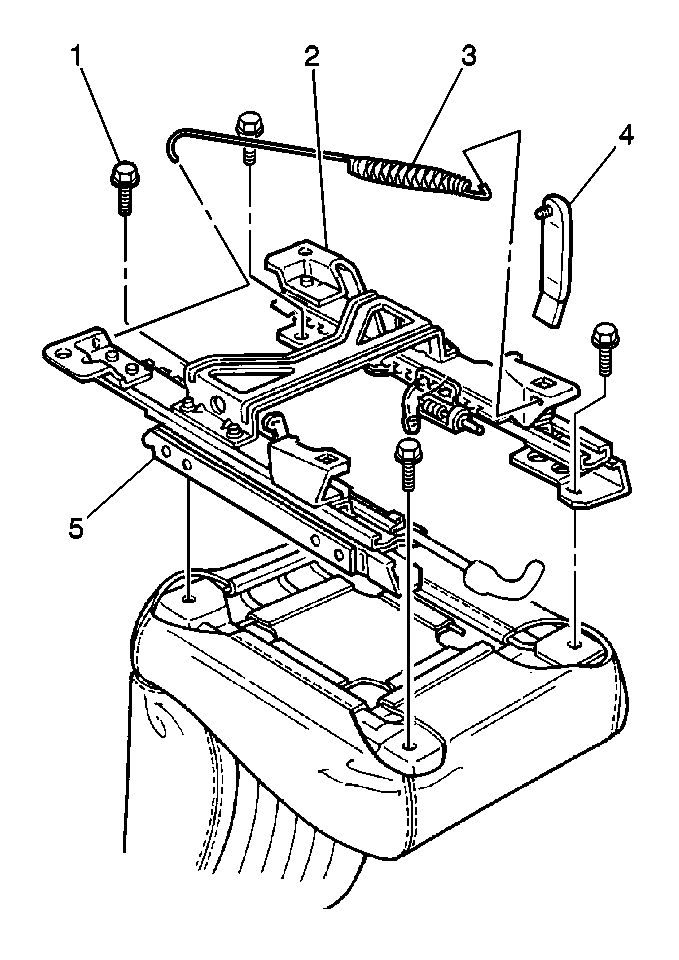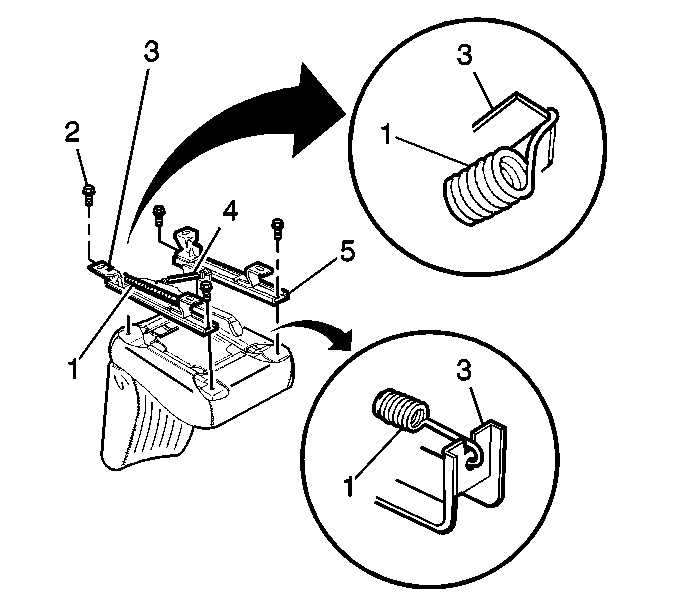Front Seat Adjuster Replacement Driver
Removal Procedure
- Remove the driver front seat. Refer to Seat Replacement .
- Disconnect the seat belt wire harness.
- Remove the seat adjuster tie bar bolts (1).
- Remove the seat adjuster tie bar (2).
- Remove the cross wire (3).
- Remove the seat adjuster return spring (3).
- Remove the seat adjuster bolts (1).
- Remove the seat adjuster (2, 5) from the seat.


Installation Procedure
- Install the right seat adjuster (2) and the left seat adjuster (5) sliding mechanisms.
- Install the seat adjuster bolts (1).
- Install the adjuster return spring (3).
- Install the adjuster tie bar (2).
- Install the tie bar bolts (1).
- Connect the seat belt wire harness.
- Install the driver front seat. Refer to Seat Replacement .
Important: Verify that the right seat adjuster (2) and the left seat adjuster (5) sliding mechanisms are in the same position, when you install the tie bar.

Notice: Use the correct fastener in the correct location. Replacement fasteners must be the correct part number for that application. Fasteners requiring replacement or fasteners requiring the use of thread locking compound or sealant are identified in the service procedure. Do not use paints, lubricants, or corrosion inhibitors on fasteners or fastener joint surfaces unless specified. These coatings affect fastener torque and joint clamping force and may damage the fastener. Use the correct tightening sequence and specifications when installing fasteners in order to avoid damage to parts and systems.
Tighten
Tighten the bolt to 24 N·m (18 lb ft).

Tighten
Tighten the bolt to 10 N·m (89 lb ft).
Front Seat Adjuster Replacement Passenger
Removal Procedure
- Remove the driver or the passenger front seat. Refer to Seat Replacement .
- Remove the adjuster return spring assembly (1).
- Perform the following actions in order to remove the adjuster locking wire assembly (4):
- Remove the right front seat E-Z entry adjuster cable (3) from the seat adjuster. Refer to Passenger Front EZ Entry Seat Replacement .
- Remove the seat adjuster bolts (1).
- Remove the seat adjuster (2) from the seat.

| 3.1. | Squeeze the hooked end of the seat adjuster locking wire together. |
| 3.2. | Slide the retaining spring. |
| 3.3. | Remove the spring from the seat adjuster lock bar. |

Installation Procedure
- Install the adjuster (3,5) to the seat bottom frame.
- Install the seat adjuster bolts (2).
- Install the E-Z entry adjuster cable to the seat adjuster. Refer to Passenger Front EZ Entry Seat Replacement .
- Perform the following actions simultaneously in order to install the adjuster locking wire assembly (3):
- Install the adjuster return spring assembly.
- Install the driver or the passenger front seat. Refer to Seat Replacement .

Important: Verify that the right seat adjuster (3) and the left seat adjuster (5) sliding mechanisms are in the same position, when you install the seat adjuster.
Notice: Use the correct fastener in the correct location. Replacement fasteners must be the correct part number for that application. Fasteners requiring replacement or fasteners requiring the use of thread locking compound or sealant are identified in the service procedure. Do not use paints, lubricants, or corrosion inhibitors on fasteners or fastener joint surfaces unless specified. These coatings affect fastener torque and joint clamping force and may damage the fastener. Use the correct tightening sequence and specifications when installing fasteners in order to avoid damage to parts and systems.
Tighten
Tighten the seat adjuster bolts to 24 N·m (18 lb ft).

| • | Attach the wire (3) to each adjuster. |
| • | Squeeze the hooked end of the seat adjuster locking wire (3) together at each end. |
| • | Slide the retaining spring at each end. |
